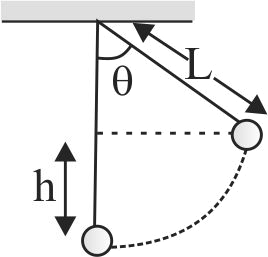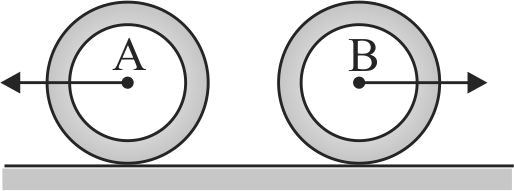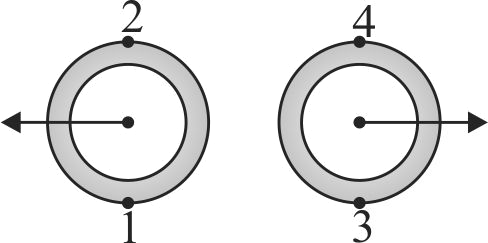358436
A simple pendulum with bob of mass \(m\) and conducting wire of length \(L\) swings under gravity through an angle \(2 \theta\). The earth's magnetic field component in the direction perpendicular to swing is \(B\). Maximum potential difference induced across the pendulum is:
358437
Two identical conducting rings \(A \& B\) of radius \(r\) are in pure rolling over a horizontal conducting plane with same speed (of center of mass) \(u\) but in opposite direction. A constant magnetic field \(B\) is present pointing inside the plane of paper. Then the potential difference between the highest points of the two rings, is
358436
A simple pendulum with bob of mass \(m\) and conducting wire of length \(L\) swings under gravity through an angle \(2 \theta\). The earth's magnetic field component in the direction perpendicular to swing is \(B\). Maximum potential difference induced across the pendulum is:
358437
Two identical conducting rings \(A \& B\) of radius \(r\) are in pure rolling over a horizontal conducting plane with same speed (of center of mass) \(u\) but in opposite direction. A constant magnetic field \(B\) is present pointing inside the plane of paper. Then the potential difference between the highest points of the two rings, is
358436
A simple pendulum with bob of mass \(m\) and conducting wire of length \(L\) swings under gravity through an angle \(2 \theta\). The earth's magnetic field component in the direction perpendicular to swing is \(B\). Maximum potential difference induced across the pendulum is:
358437
Two identical conducting rings \(A \& B\) of radius \(r\) are in pure rolling over a horizontal conducting plane with same speed (of center of mass) \(u\) but in opposite direction. A constant magnetic field \(B\) is present pointing inside the plane of paper. Then the potential difference between the highest points of the two rings, is
358436
A simple pendulum with bob of mass \(m\) and conducting wire of length \(L\) swings under gravity through an angle \(2 \theta\). The earth's magnetic field component in the direction perpendicular to swing is \(B\). Maximum potential difference induced across the pendulum is:
358437
Two identical conducting rings \(A \& B\) of radius \(r\) are in pure rolling over a horizontal conducting plane with same speed (of center of mass) \(u\) but in opposite direction. A constant magnetic field \(B\) is present pointing inside the plane of paper. Then the potential difference between the highest points of the two rings, is

